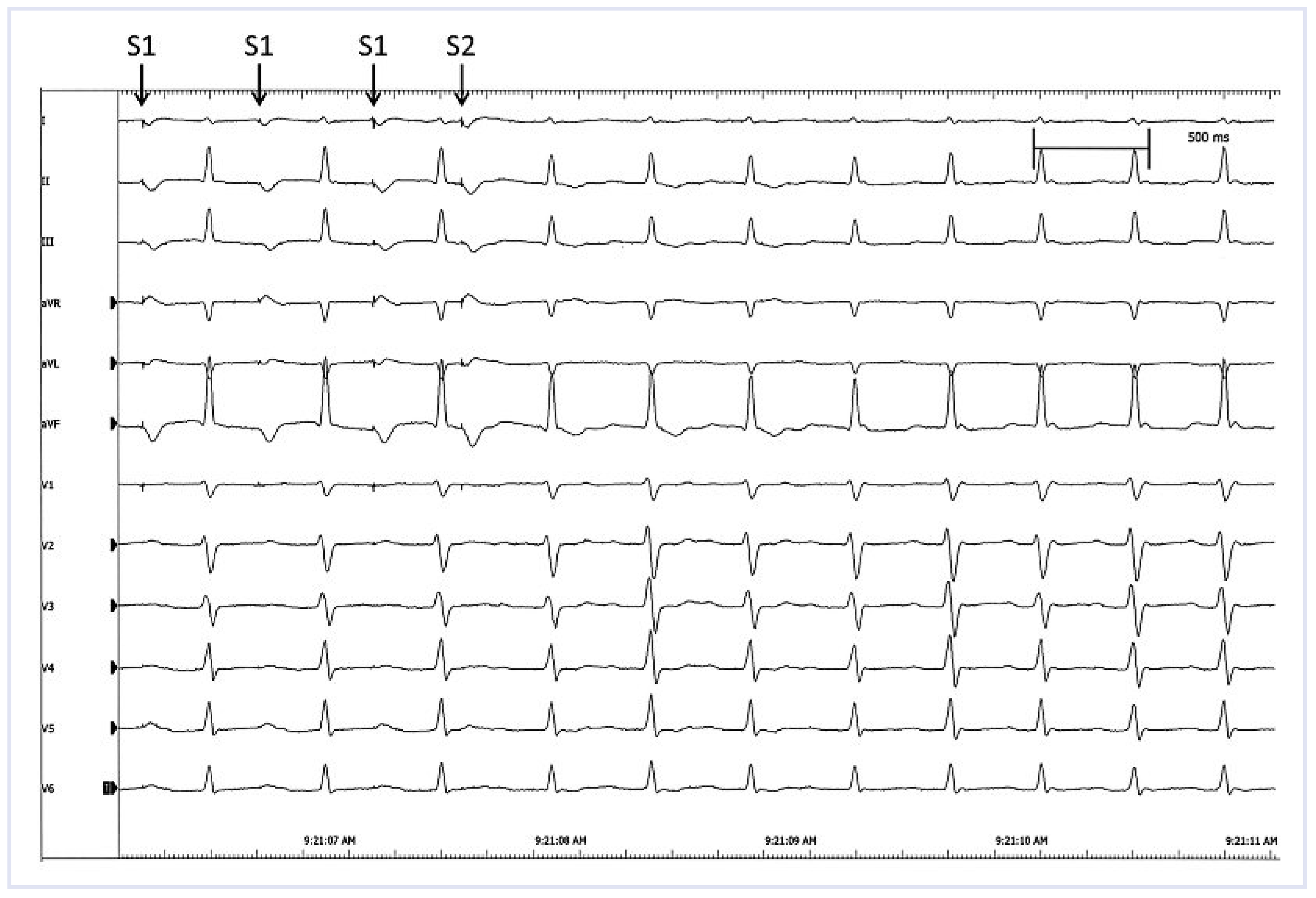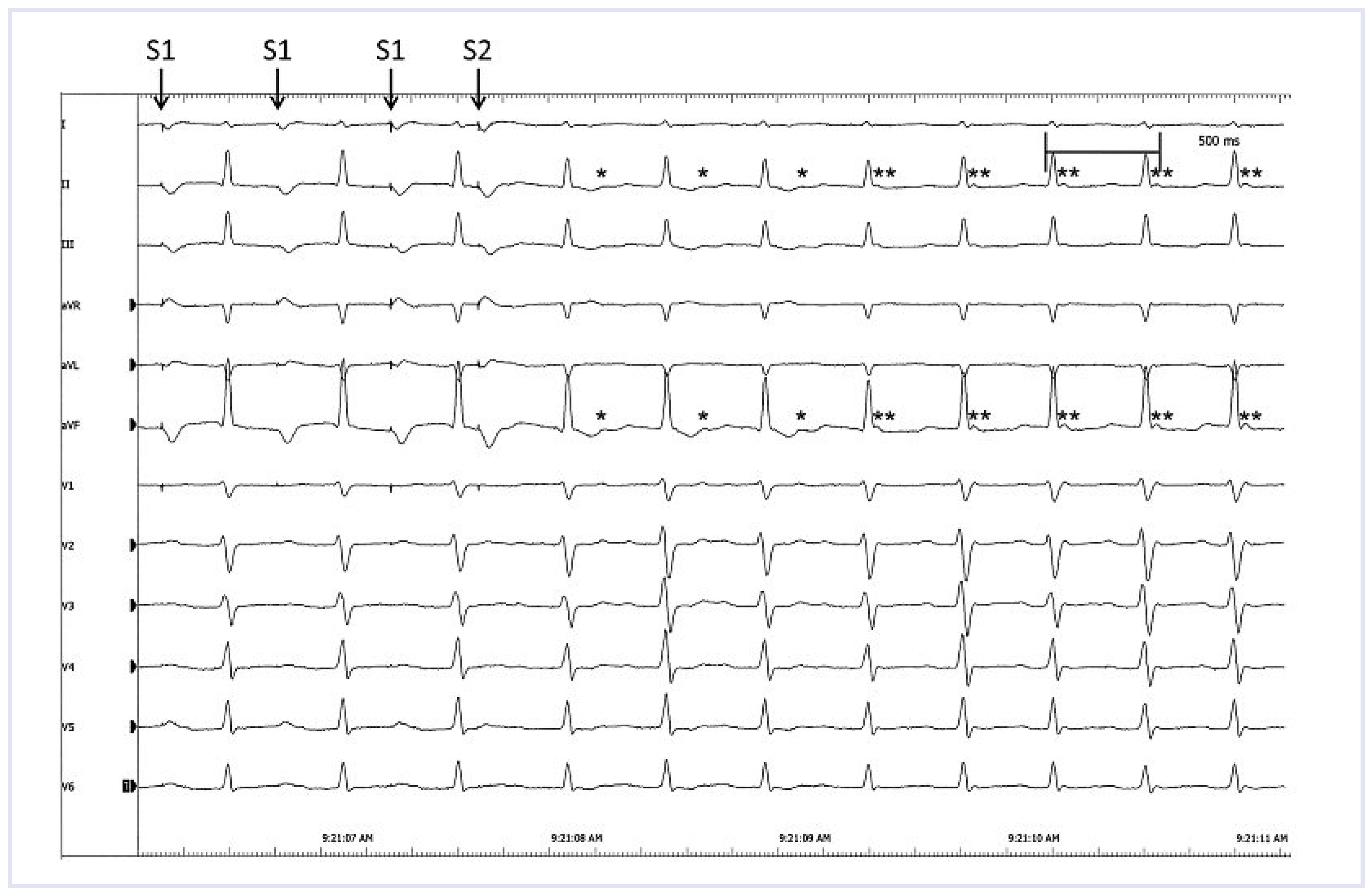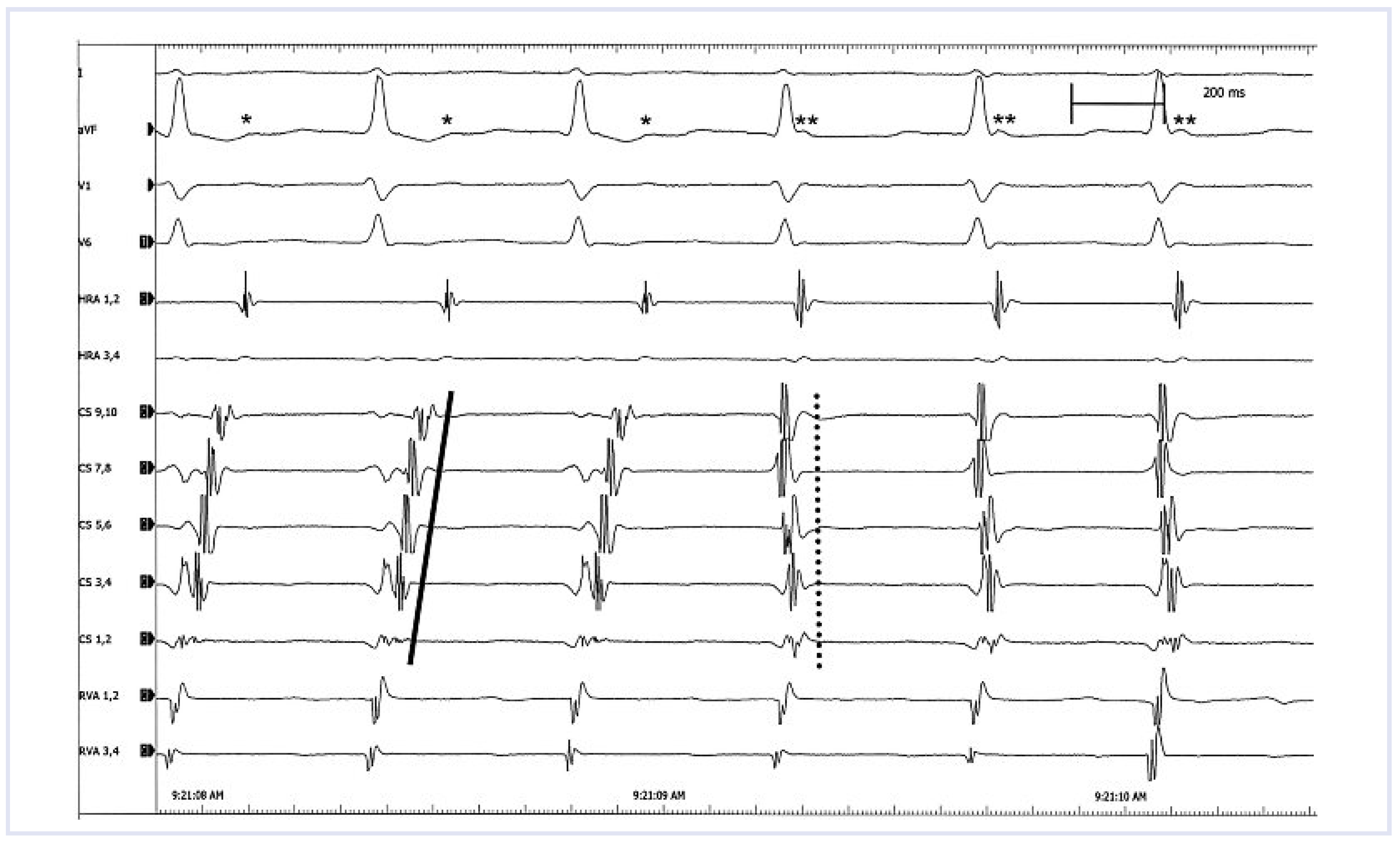Just a Supraventricular Tachycardia
Case report
Questions
Answers
Comments
Funding
Conflicts of Interest
References
- Spector, P.; Reynolds, M.R.; Calkins, H.R.; Sondhi, M.; Xu, Y.; Martin, A.; et al. Meta-analysis of atrial flutter and supraventricular tachycardia. Am J Cardiol. 2009, 104, 671–7. [Google Scholar] [CrossRef] [PubMed]
- Samii, S.M.; Cohen, M.H. Abation of tachyarrhythmias in pediatric patients. Curr opin Cardiol. 2004, 19, 64–7. [Google Scholar] [CrossRef] [PubMed]
- Wenig, K.P.; Wolff, G.S.; Young, M.L. Multiple acessory pathways in pediatric patients with wolff parkinson white syndrome. Am J Cardiol. 2003, 91, 1178–83. [Google Scholar] [CrossRef] [PubMed]
- Lee, P.C.; Hwang, B.; Chen, Y.J.; Tai, C.T.; Chen, S.A.; Chiang, C.E. Electrophysiologic characteristics and radiofrequency catheter ablation in children with Wolff Parkison White Syndrome. PACE. 2006, 29, 490–5. [Google Scholar] [CrossRef] [PubMed]



© 2011 by the author. Attribution - Non-Commercial - NoDerivatives 4.0.
Share and Cite
Balmer, C.; Gass, M. Just a Supraventricular Tachycardia. Cardiovasc. Med. 2011, 14, 294. https://doi.org/10.4414/cvm.2011.01619
Balmer C, Gass M. Just a Supraventricular Tachycardia. Cardiovascular Medicine. 2011; 14(10):294. https://doi.org/10.4414/cvm.2011.01619
Chicago/Turabian StyleBalmer, Christian, and Matthias Gass. 2011. "Just a Supraventricular Tachycardia" Cardiovascular Medicine 14, no. 10: 294. https://doi.org/10.4414/cvm.2011.01619
APA StyleBalmer, C., & Gass, M. (2011). Just a Supraventricular Tachycardia. Cardiovascular Medicine, 14(10), 294. https://doi.org/10.4414/cvm.2011.01619



